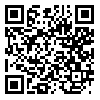Volume 16, Issue 1 (Jan & Feb-In Press 2026)
J Research Health 2026, 16(1): 3-3 |
Back to browse issues page
Ethics code: (AUC/RO/Ph.D.-RT/2023/5747).
Download citation:
BibTeX | RIS | EndNote | Medlars | ProCite | Reference Manager | RefWorks
Send citation to:



BibTeX | RIS | EndNote | Medlars | ProCite | Reference Manager | RefWorks
Send citation to:
Singh A, Kumar M. Psychometrics of the General Self-Efficacy Tool Among Indian Homemakers. J Research Health 2026; 16 (1) :3-3
URL: http://jrh.gmu.ac.ir/article-1-2826-en.html
URL: http://jrh.gmu.ac.ir/article-1-2826-en.html
1- Amity Institute of Behavioural & Allied Sciences, Amity University Chhattisgarh, India.
2- Amity Institute of Behavioural & Allied Sciences, Amity University Chhattisgarh, India ,sedighe.arabi@yahoo.com
2- Amity Institute of Behavioural & Allied Sciences, Amity University Chhattisgarh, India ,
Abstract: (2116 Views)
Background: Self-efficacy plays a crucial role in determining the overall well-being and empowerment of individuals, particularly among early adulthood homemakers in India. Despite its importance, there is a scarcity of research on the psychometric properties of the General Self-Efficacy Scale (GSES) among India. This study aims to bridge this knowledge gap by examining the reliability and validity of GSES among early adulthood homemakers in India.
Methods: This cross-sectional study was conducted among 200 full-time homemakers in Chhattisgarh, India, selected through stratified random sampling. Participants were women aged 20-40 years, married for at least one year, with a minimum 12th-grade education in English medium. The sample size was determined using G*Power analysis. We used a demographic characteristics checklist and the 10-item General Self-Efficacy Scale (GSES), assessing validity and reliability through exploratory factor analysis (EFA), confirmatory factor analysis (CFA), and Cronbach's alpha.
Results: EFA illustrated 4 factors model that accounted for 64.14% variance with factor loadings ranging from 0.57 to 0.84. CFA confirmed 4 factors model with a satisfactory model fit indices (CFI = 0.895, TLI = 0.782, RMSEA = 0.084 and SRMR = 0.044), but internal consistency (Cronbach’s alpha between 0.466 and 0.678) of the three factors was low. Therefore, despite the EFA results, we recommend the original one-factor model for the GSE scale (CFI = 0.769, TLI = 0.745, RMSEA = 0.098 and SRMR = 0.064) in the Indian population due to its higher internal consistency (Cronbach's alpha = 0.74).
Conclusion: The study validates the original General Self-Efficacy Scale (GSES) as a reliable tool for measuring self-efficacy among early adulthood homemakers in India, enabling its application in research, interventions, and policy development aimed at promoting women's empowerment and well-being.
Methods: This cross-sectional study was conducted among 200 full-time homemakers in Chhattisgarh, India, selected through stratified random sampling. Participants were women aged 20-40 years, married for at least one year, with a minimum 12th-grade education in English medium. The sample size was determined using G*Power analysis. We used a demographic characteristics checklist and the 10-item General Self-Efficacy Scale (GSES), assessing validity and reliability through exploratory factor analysis (EFA), confirmatory factor analysis (CFA), and Cronbach's alpha.
Results: EFA illustrated 4 factors model that accounted for 64.14% variance with factor loadings ranging from 0.57 to 0.84. CFA confirmed 4 factors model with a satisfactory model fit indices (CFI = 0.895, TLI = 0.782, RMSEA = 0.084 and SRMR = 0.044), but internal consistency (Cronbach’s alpha between 0.466 and 0.678) of the three factors was low. Therefore, despite the EFA results, we recommend the original one-factor model for the GSE scale (CFI = 0.769, TLI = 0.745, RMSEA = 0.098 and SRMR = 0.064) in the Indian population due to its higher internal consistency (Cronbach's alpha = 0.74).
Conclusion: The study validates the original General Self-Efficacy Scale (GSES) as a reliable tool for measuring self-efficacy among early adulthood homemakers in India, enabling its application in research, interventions, and policy development aimed at promoting women's empowerment and well-being.
Type of Study: Orginal Article |
Subject:
● Psychosocial Health
Received: 2025/06/24 | Accepted: 2025/08/3 | Published: 2026/01/27
Received: 2025/06/24 | Accepted: 2025/08/3 | Published: 2026/01/27
| Rights and permissions | |
 |
This work is licensed under a Creative Commons Attribution-NonCommercial 4.0 International License. |








